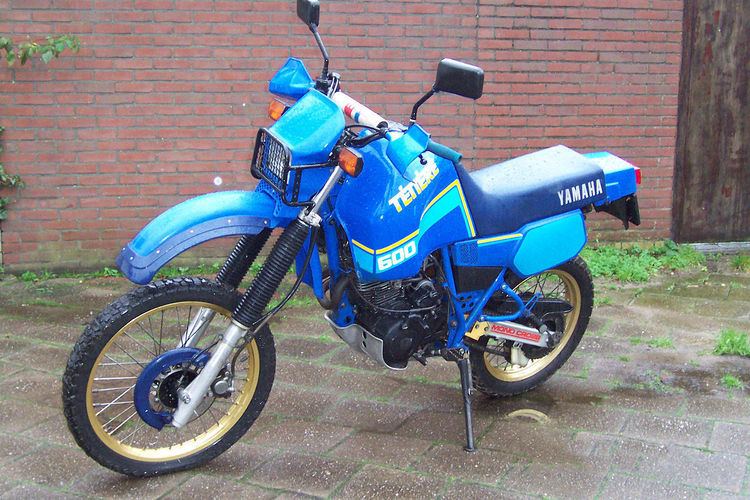 | ||
The Yamaha XT 600 is a motorcycle manufactured by Japanese motorcycle manufacturer Yamaha. It was built from 1984 to 2003 in different versions, becoming the most popular Enduro of its time.
Contents
Model history
The XT 600 is considered to be an all-purpose Enduro, which is suitable for use on the road as well as off-road driving. With disc brakes, four-valve engine, mono-shock absorber (mono Cross) and contemporary 12-volt electrics they got significant changes from the established in 1975 Yamaha XT 500.
The first XT 600 was introduced in 1984, one year after the XT 600Z Ténéré was on the market. In addition to the changes in design, the main difference was the use of the compact 11.5-liter tank in place of the 28-liter "barrel" of the long-haul variant XT 600Z Ténéré; the road model Yamaha SRX 600 was derived later. In 1991, the somewhat obsolete XT 600Z Ténéré was replaced by the water-cooled Yamaha XTZ 660, which no longer had the same off-road capabilities of its predecessor.
Over the years, the XT was built in 600 different variants which, however, usually only look different. The most important change of the XT 600 which had only been using a kick starter was in 1990; the 600 E XT was presented as a new model with a more contemporary design, chrome-plated steel wheel instead of aluminum wheels, now without a tachometer, with the exhaust as the supporting frame member, a 13.9-liter tank and an electric starter. In addition, the oil tank, which was previously located under the left side cover, was moved forward behind the steering head between the frame and girder bridge. Due to high demand, the XT 600 K, which featured a kick starter, but was otherwise structurally identical to the XT 600 E model, was introduced to the market; the series ran until 1995. Due to more stringent emissions requirements, the power of the XT 600 E, which had become the only available model, was reduced by 4 kW to 29 kW (39 hp), and a tachometer was reintegrated in the cockpit. The clutch actuation on the engine body was moved from the left to the right side, and the muffler was no longer part of the rear frame. The reliability of the XT unit was not harmed, as mileages of over 100,000 km and unopened motor are not uncommon.
The bike was eventually succeeded by several newer versions including XT660R (road-trail), XT660X (motard), and XT660Z Ténéré (adventure). Additionally it inspired larger models, notably the adventure-styled XTZ750 Super Ténéré and XT1200Z Super Ténéré.
